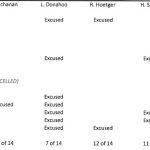In December 2017, the unexpected electrical power outage throughout the Hill during the extreme wind storm may have been a necessary safety step; but the California Public Utilities Commission is taking a more active role in future “de-energizing” incidents.
While many Northern California residents wish Pacific Gas and Electric would have been more proactive de-energizing power lines last year before the wildfires, the CPUC wants to try to ensure customers have more time to prepare for these emergencies.
In a proposed rule making, issued May 30, the CPUC is proposing that the “investor owned utilities,” such as Southern California Edison, comply with customer-notification requirements before shutting off power. The commission will consider this proposal at its July 12 meeting.
The CPUC acknowledges that de-energizing during dangerous conditions is a safety action and probably prevents more wildfires.
The proposal “requires that utilities meet with the local communities that may be impacted by a future de-energization event before putting the practice in effect in a particular area, and requires customer notifications prior to a de-energization event, if feasible.”
The CPUC should be notified as soon as practicable and within 30 minutes after power is restored.
If the commission adopts the rule, electric providers will be required to hold workshops with state, local and tribal governments, and representatives of local communities to discuss their de-energization policies and procedures.
In addition to the CPUC attention to this issue, State Sen. Bill Dodd proposed legislation (Senate Bill 901) also addressing this type of event. The bill, which the Senate has passed, requires utilities to develop wildfire plans.
The plans would explain the conditions, such as weather and fire threats, when shutting power off may be necessary and prudent. These wildfire plans should also describe the procedures for alerting and informing customers of the impending de-energizing.
“De-energizing a power line may create an inconvenience to the utility customer,” Dodd said in the press release after SB 901 passed the Senate. “But without these protocols in place, the alternative may lead to the unthinkable such as that which we experienced in the North Bay last October.”
The CPUC and the Legislature’s actions are not designed to deter these types of safety actions. Everyone acknowledges, while inconvenient and possibly dangerous for some citizens, greater danger can be avoided.
After the December event on the Hill, Idyllwild Fire Chief Patrick Reitz confirmed the perspective of local firefighters: “It was my understanding that Edison made the decision for the safety of all and the fire danger. … but it was the right decision to make for all the right reasons. As inconvenient as it was, it was the right decision.” The number of customers without power on the Hill was 3,117, according to SCE.
Further, twice in December 2017, San Diego Gas and Electric shut down circuits due to fire threat, high winds, limited ability for air resources to assist fire suppression and other conditions. The CPUC review concurred with SDGE’s decision and the proposed rule making essentially expands these procedures to other utilities.










